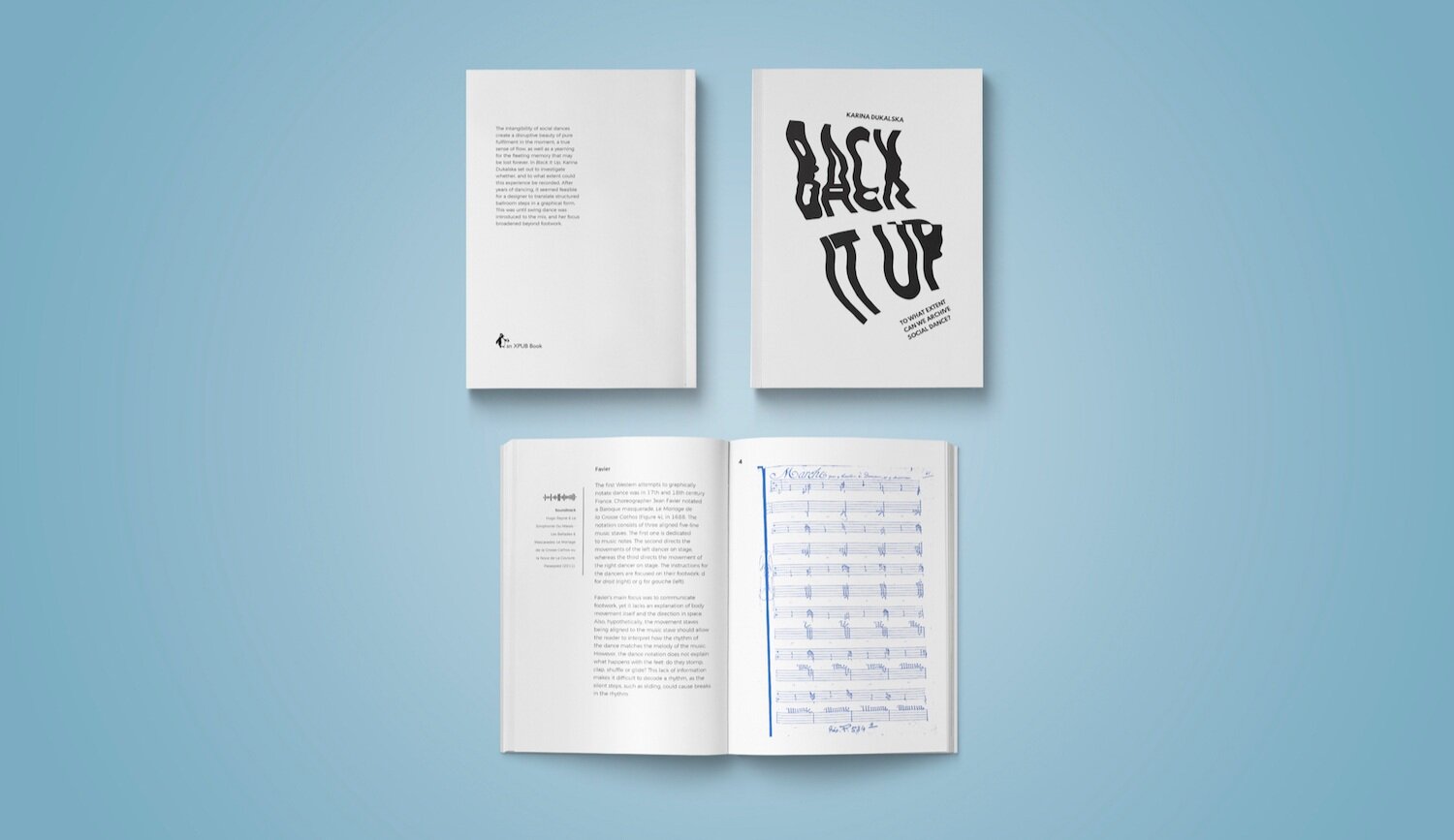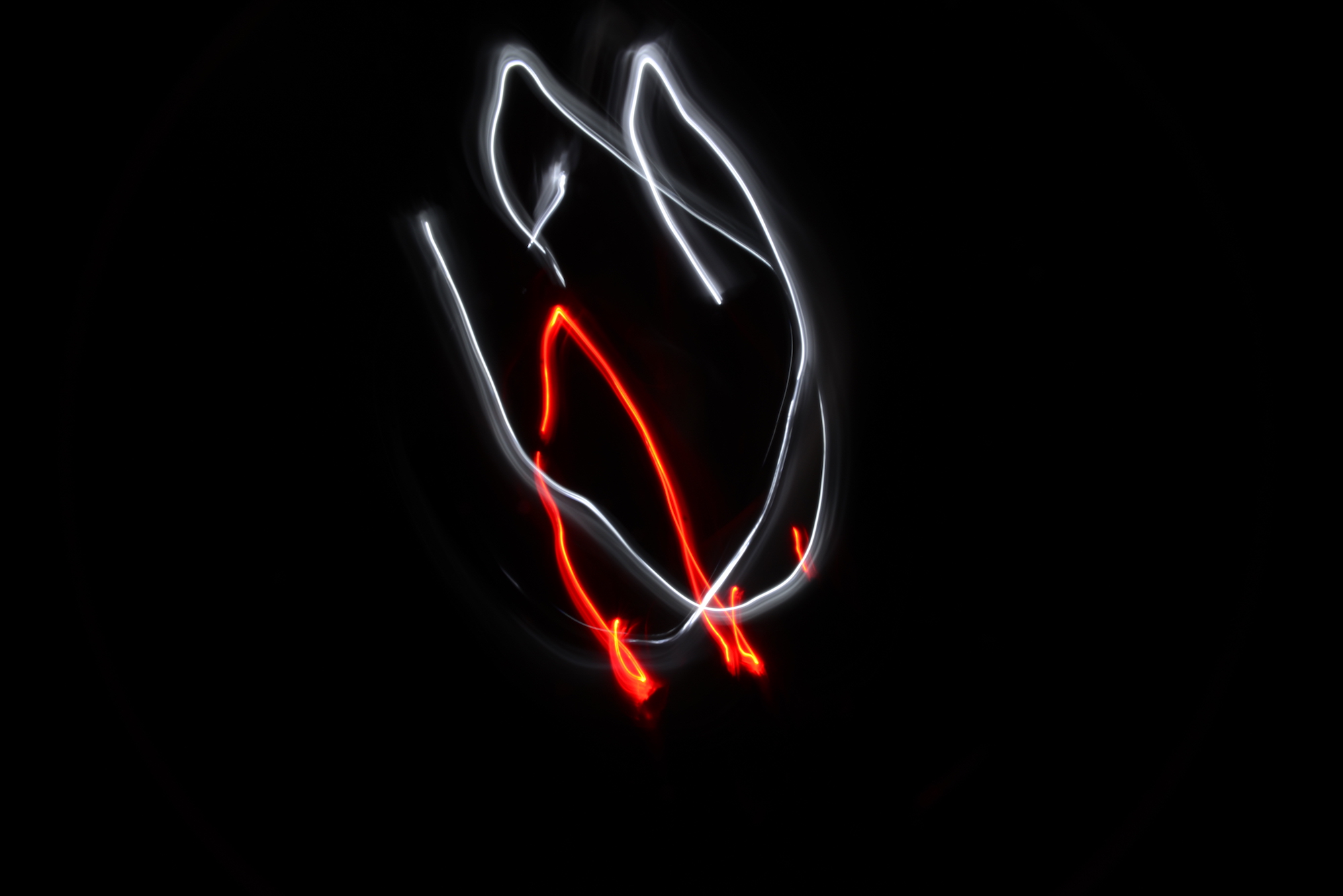Back It Up
PUBLISHING
overview
Back It Up is an interactive performance of two swing dancers whose steps are controlled by the audience. It is accompanied by graphical notation systems, traces of the non-verbal dialogue between dancers and the atmosphere in the room recorded by the audience. The difference in perception of the experience is what makes every recording unique.
core
Social dancing is an ephemeral art which is difficult to document. From a dancer’s perspective, video on its own is a bad medium to view and learn a dance from. Many have tried to translate movement into graphical notation systems, but none have managed to communicate the experience fully. The history and cultural values, which play such a strong role in social dancing, cannot be expressed in scores. Is there a way we could record and archive social dance to not only pass down the steps but also the culture to future generations?
extra detail
completed in July 2018
Final graduation project for Master of Media Design at Piet Zwart Institute, Willem de Kooning Academie, Rotterdam
The project consists of a workshop and an interactive performance presented at UBIK and S/ASH Gallery in Rotterdam, on the 5th of July 2018
An installation showing the audiences' response to the performance, the work's progress and printed copies of my thesis publication is on show during WdKA Graduation Show 5th till 8th July at the Willem de Kooning Academie, Rotterdam
For more information about the show visit https://www.wdka.nl/ex/
For my master's thesis in Media Design at Piet Zwart Institute, I explored documentation of ephemeral arts, focusing on social dancing. The intangibility of social dances creates a disruptive beauty of pure fulfilment in the moment, a true sense of flow, as well as a yearning for the fleeting memory that may be lost forever. How can we record and archive it to pass down not only the steps but also the culture?
This research is a synthesis of examples and experiments to approach the question: to what extent can we archive social dance? A series of experiments supported by philosophical and psychological theory, personal graphical approaches and interviews with influential dancers create a collected view on the matter of documenting social dances and the means in which we could do it.
The publication is divided into three segments. Part one looks at the history and culture of preserved social dances, analyses previous graphical notation systems and suggests how these could be developed. Part two investigates how the brain processes dance with regards to time perception, memory and flow, and how that shapes perception. Finally, part three compares dance to language and discusses what non-verbal communication among social dancers is, and how a difference in perception could harm the process of passing down the dance person-to-person.
Despite the limitations of the printing process given by the Espresso Book Machine at The American Book Center, I strived for the publication to be as interactive as possible. I wanted to allow the reader to experience the rhythm and fluidity of dance through graphic and print design. I also included links to Spotify songs so the reader could scan and listen along as they read, so that they could have a deeper understanding of the content within.
Printed copies of my thesis are available. Please contact me if you are interested.















